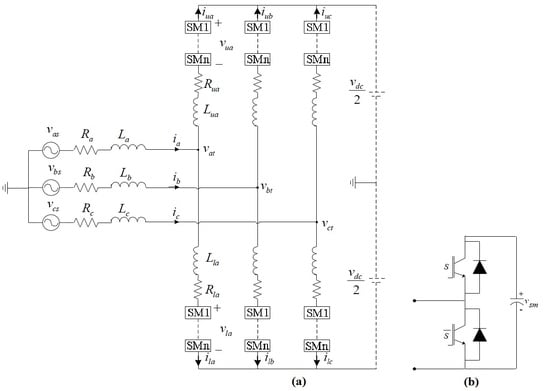A Novel Modulation Function-Based Control of Modular Multilevel Converters for High Voltage Direct Current Transmission Systems
Abstract
:1. Introduction
2. Modular Multilevel Converter’s Alternating Current-Side Voltages
Detailed Calculation of the Alternating Current-Side Voltage
3. Analysis of Proposed Modulation Function
3.1. Parameters Variation Effects on the Proposed Modulation Function
3.2. Input Current Variation Effects on the Proposed Modulation Function
4. Simulation Results
4.1. Parameter Variation Evaluation
4.2. Evaluation of Modular Multilevel Converter Input Current Variation
5. Conclusions
Acknowledgments
Author Contributions
Conflicts of Interest
Nomenclature
| Abbreviation | |
| MMC | Modular multilevel converter |
| HVDC | High voltage direct current |
| SLPWM | Shift level pulse width modulation |
| SS | Switching signals |
| SM | Sub-module |
| AC | Alternating current |
| KVL | Kirchhoff’s voltage law |
| Variables | |
| ik | Input MMC currents |
| Imk | Magnitude of input MMC currents |
| iku | Upper arm currents |
| ikl | Lower arm currents |
| Reference values of input MMC currents | |
| vks | Input MMC voltages |
| vkl | AC-side voltages |
| vm | Magnitude of input MMC voltages |
| Reference value of input MMC voltage | |
| vku | Upper arm voltages |
| vkl | Lower arm voltages |
| vDC | MMC DC-link voltage |
| uku | Switching function for Upper’s arms |
| ukl | Switching function for Lower’s arms |
| mk | Proposed modulation index |
| αk | Angle between input MMC voltages and currents |
| Reference value of | |
| Vkt | Magnitude of upper and lower voltage difference |
| θkt | Angle of upper and lower voltage difference |
| Parameters | |
| Lk | Input inductance of MMC |
| Rk | Input resistance of MMC |
| Lkul | Arm’s inductance of MMC |
| Rkul | Arm’s resistance of MMC |
| Lkt | Equivalent arm’s inductance of MMC |
| Rkt | Equivalent arm’s resistance of MMC |
| ω | Angular frequency of MMC |
Appendix
References
- Marquardt, R. Modular multilevel converter: An universal concept for HVDC-Networks and extended DC-Bus applications. In Proceedings of the 2010 International Conference on Power Electronics (IPEC2010), Tokyo, Japan, 21–24 June 2010; pp. 502–507.
- Glinka, M.; Marquardt, R. A new AC/AC multilevel converter family. IEEE Trans. Ind. Electron. 2005, 52, 662–669. [Google Scholar] [CrossRef]
- Pouresmaeil, E.; Mehrasa, M.; Shokridehaki, M.A.; Rodrigues, E.; Catalao, J.P.S. Control of multi modular converters for integration of distributed generation sources into the power grid. In Proceedings of the IEEE International Conference on Smart Energy Grid Engineering (SEGE) 2015, Oshawa, ON, Canada, 17–19 August 2015.
- Gnanarathna, U.N.; Gole, A.M.; Jayasinghe, R.P. Efficient modeling of modular multilevel HVDC converters (MMC) on electromagnetic transient simulation programs. IEEE Trans. Power Deliv. 2011, 26, 316–324. [Google Scholar] [CrossRef]
- Tu, Q.; Xu, Z.; Xu, L. Reduced-switching frequency modulation and circulating current suppression for modular multilevel converters. IEEE Tran. Power Deliv. 2011, 26, 2009–2017. [Google Scholar]
- Mei, J.; Xiao, B.; Shen, K.; Tolbert, L.M.; Zheng, J.Y. Modular multilevel inverter with new modulation method and its application to photovoltaic grid-connected generator. IEEE Trans. Power Electron. 2013, 28, 5063–5073. [Google Scholar] [CrossRef]
- Li, Z.; Wang, P.; Zhu, H.; Chu, Z.; Li, Y. An improved pulse width modulation method for chopper-cell-based modular multilevel converters. IEEE Trans Power Electron. 2012, 27, 3472–3481. [Google Scholar] [CrossRef]
- Kouro, S.; Malinowski, M.; Gopakumar, K.; Pou, J.; Franquelo, L.G.; Wu, B.; Rodriguez, J.; Perez, M.A.; Leon, J.I. Recent advances and industrial applications of multilevel converters. IEEE Trans Ind. Electron. 2010, 57, 2553–2580. [Google Scholar] [CrossRef]
- Naderi, R.; Rahmati, A. Phase-shifted carrier PWM technique for general cascaded inverters. IEEE Trans. Power Electron. 2008, 23, 1257–1269. [Google Scholar] [CrossRef]
- Li, B.; Yang, R.; Xu, D.; Wang, G.; Wang, W.; Xu, D. Analysis of the phase-shifted carrier modulation for modular multilevel converters. IEEE Trans. Power Electron. 2014, 30, 297–310. [Google Scholar] [CrossRef]
- Hagiwara, M.; Akagi, H. Control and experiment of pulse width modulated modular multilevel converters. IEEE Trans. Power Electron. 2009, 24, 1737–1746. [Google Scholar] [CrossRef]
- Solas, E.; Abad, G.; Barrena, J.; Aurtenetxea, S.; Carcar, A.; Zaja, L.C. Modular multilevel converter with different submodule concepts—Part II: Experimental validation and comparison for HVDC application. IEEE Trans. Ind. Electron. 2013, 60, 4536–4545. [Google Scholar] [CrossRef]
- Peng, H.; Hagiwara, M.; Akagi, H. Modeling and analysis of switching-ripple voltage on the DC link between a diode rectifier and a modular multilevel cascade inverter (MMCI). IEEE Trans. Power Electron. 2013, 28, 75–84. [Google Scholar] [CrossRef]
- Thitichaiworakorn, N.; Hagiwara, M.; Akagi, H. Experimental verification of a modular multilevel cascade inverter based on Double-Star Bridge-Cells (MMCI-DSBC). IEEE Trans. Ind. Electron. 2013, 50, 509–519. [Google Scholar]
- Angquist, L.; Antonopoulos, A.; Siemazko, D.; Ilves, K.; Vasiladiotis, M.; Nee, H.P. Open-loop control of modular multilevel converters using estimation of stored energy. IEEE Trans. Appl. 2011, 47, 2516–2524. [Google Scholar] [CrossRef]
- Tu, Q.; Xu, Z. Impact of sampling frequency on harmonic distortion for modular multilevel converter. IEEE Trans. Power Deliv. 2011, 26, 298–306. [Google Scholar] [CrossRef]
- Ilves, K.; Antonopoulos, A.; Norrga, S.; Nee, H.P. A new modulation method for the modular multilevel converter allowing fundamental switching frequency. IEEE Trans Power Electron. 2012, 27, 3482–3494. [Google Scholar] [CrossRef]
- Hu, P.; Jiang, D. A level-increased nearest level modulation method for modular multilevel converters. IEEE Trans Power Electron. 2014, 30, 1836–1842. [Google Scholar] [CrossRef]
- Picas, R.; Ceballos, S.; Pou, J.; Zaragoza, J.; Konstantinou, G.; Agelidis, V.G. Closed loop discontinuous modulation technique for capacitor voltage ripples and switching losses reduction in modular multilevel converters. IEEE Trans Power Electron. 2014, 30, 4714–4725. [Google Scholar] [CrossRef]
- Harchegani, A.K.; Iman-Eini, H. Selective harmonic elimination pulse width modulation in single-phase modular multilevel converter. In Proceedings of the 2015 6th Power Electronics, Drives Systems & Technologies Conference (PEDSTC), Tehran, Iran, 3–4 February 2015.
- Konstantinou, G.; Ciobotaru, M.; Agelidis, V. Selective harmonic elimination pulse-width modulation of modular multilevel converters. IET Power Electron. 2013, 6, 196–107. [Google Scholar] [CrossRef]
- Ahmed, N.; Haider, A.; Angquist, L.; Nee, H.P. M2C-based MTDC system for handling of power fluctuations from offshore wind farms. In Proceedings of the IET Renewable Power Generation (RPG 2011), Edinburgh, UK, 6–8 September 2011.
- Adam, G.P.; Finney, S.; Williams, B. Analysis of modular multilevel converter capacitor voltage balancing based on phase voltage redundant states. IET Power Electron. 2012, 5, 726–738. [Google Scholar]
- Teeuwsen, S.P. Modeling the trans bay cable project as voltage-sourced converter with modular multilevel converter design. In Proceedings of the IEEE Power Energy Society. General Meeting, Detroit, MI, USA, 24–29 July 2011.
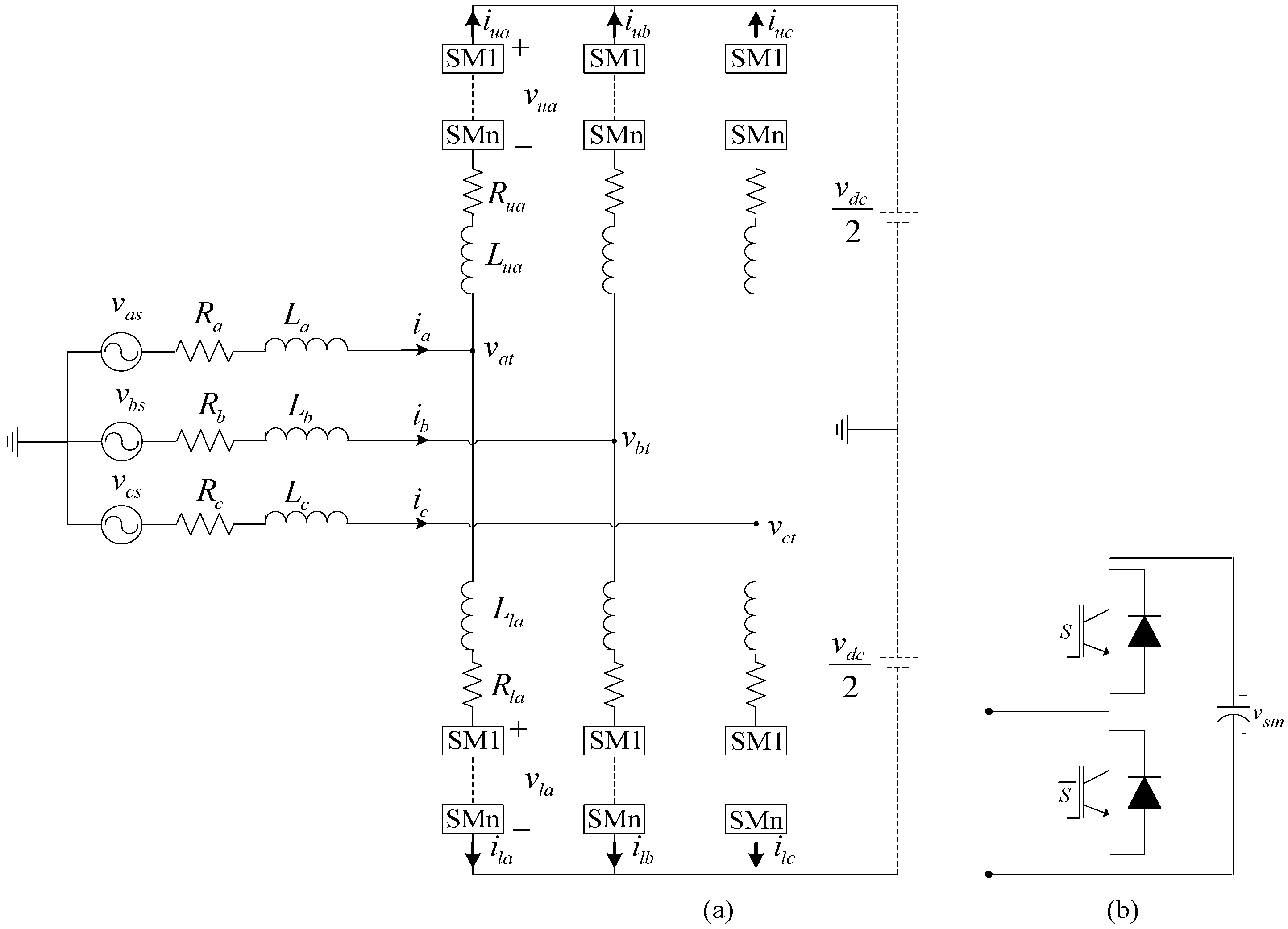
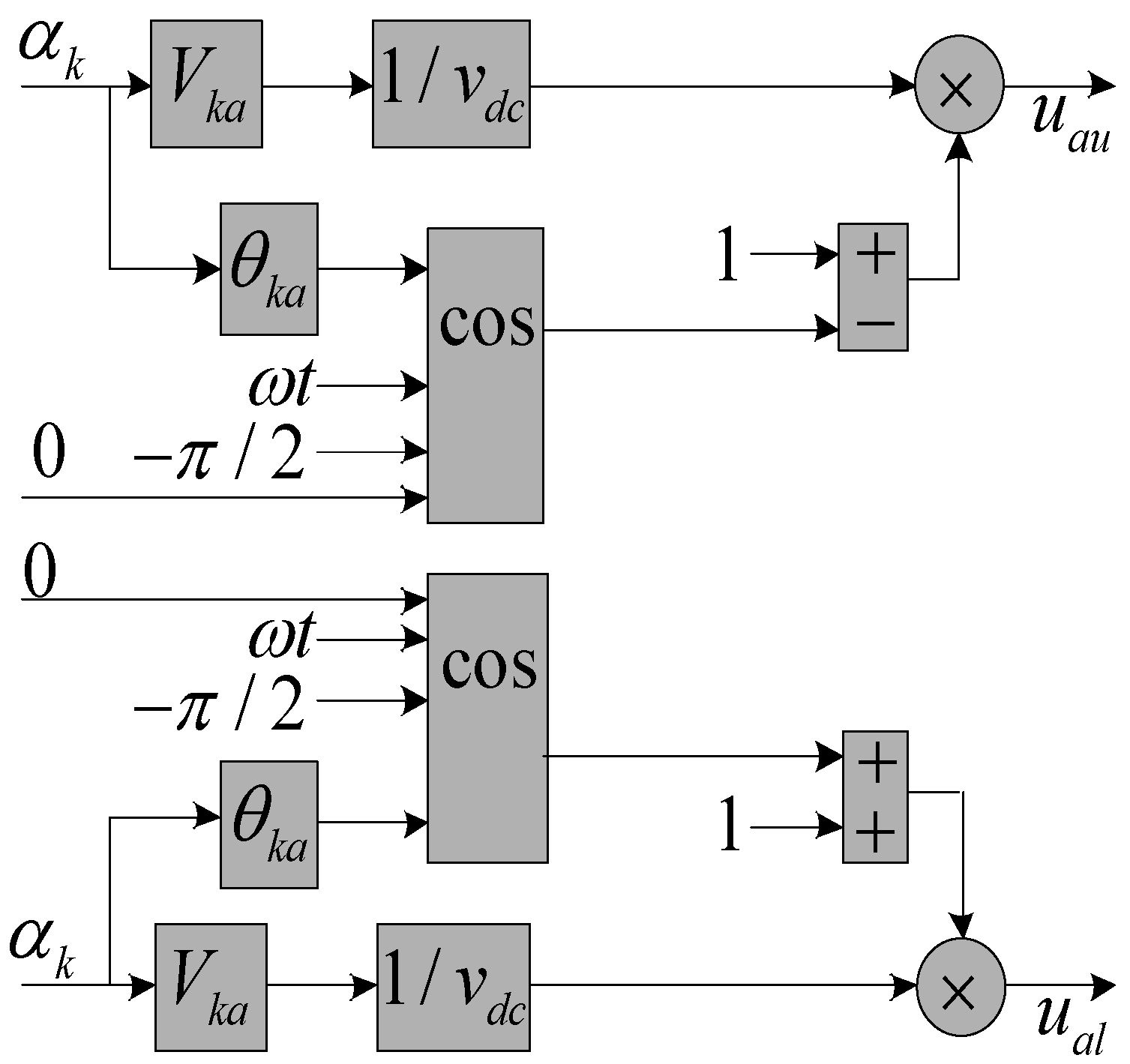
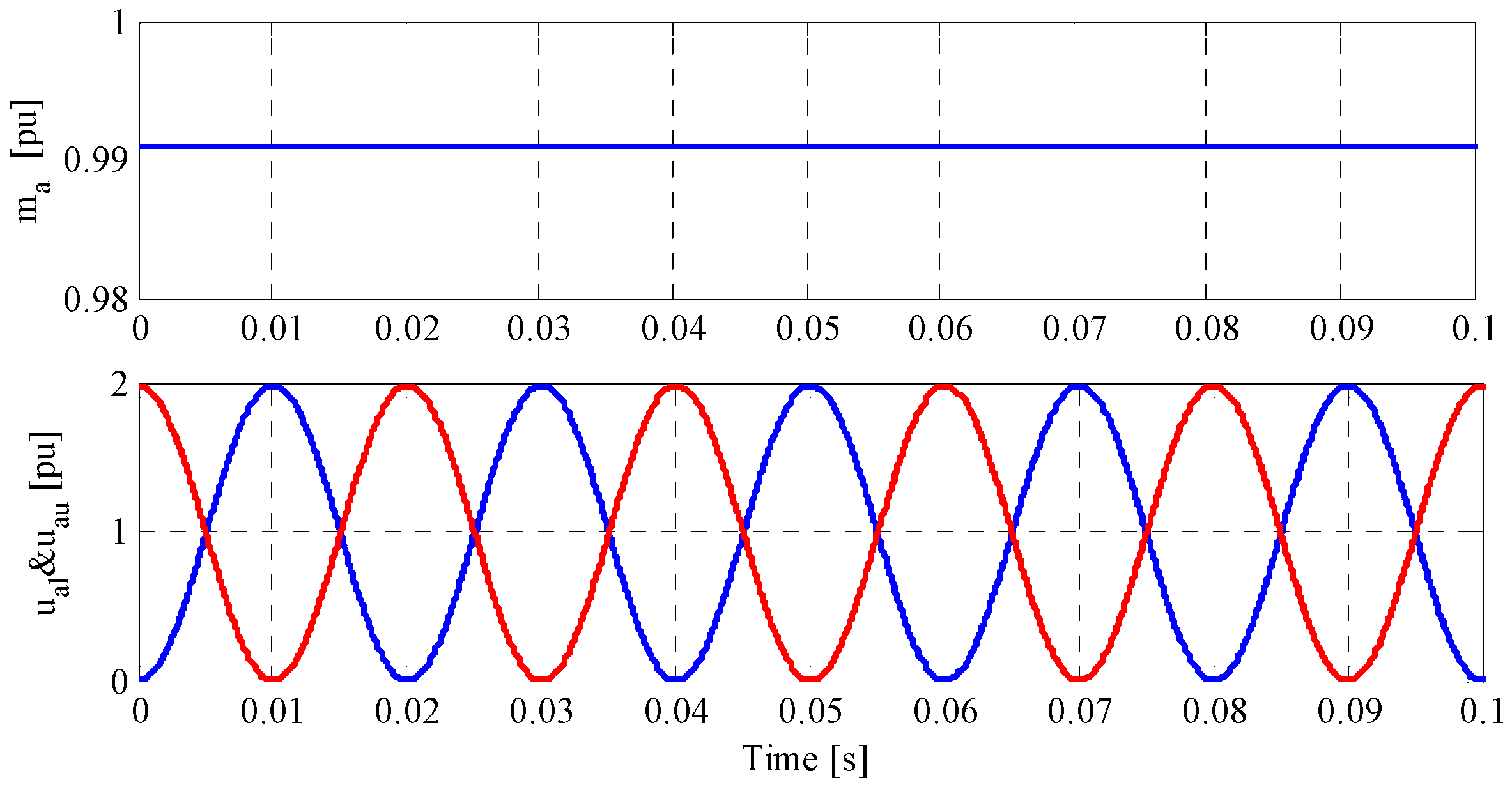
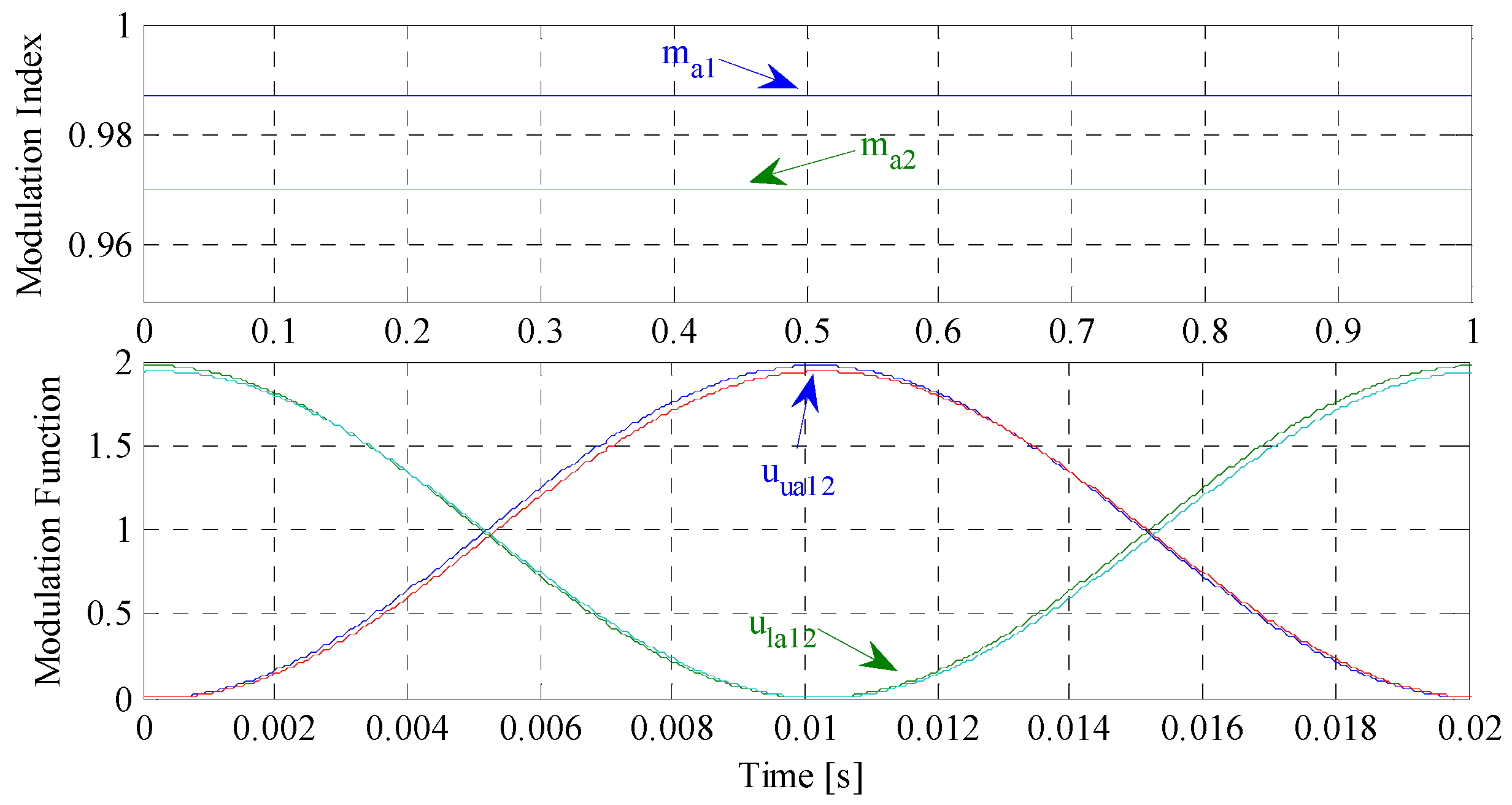
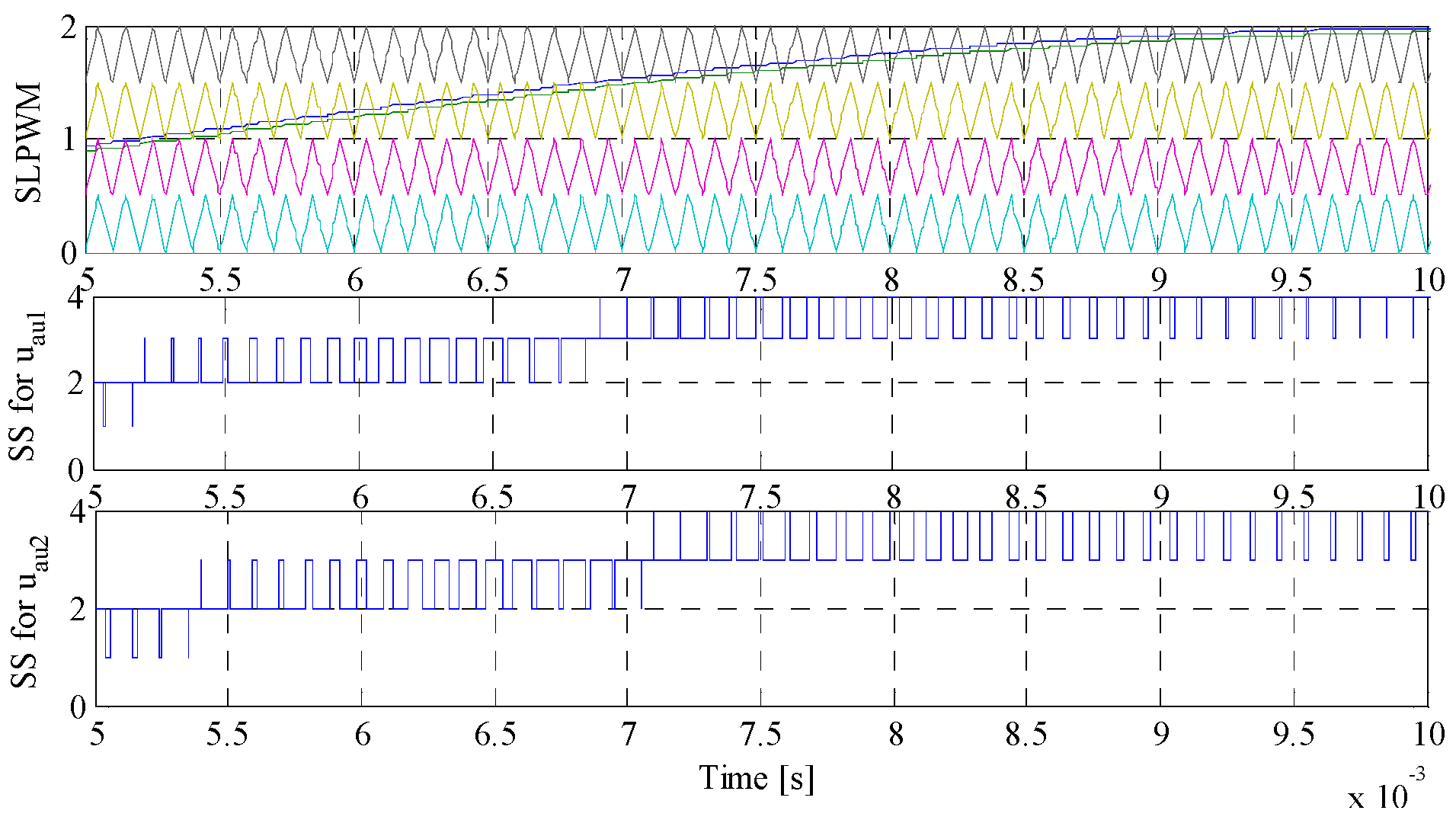
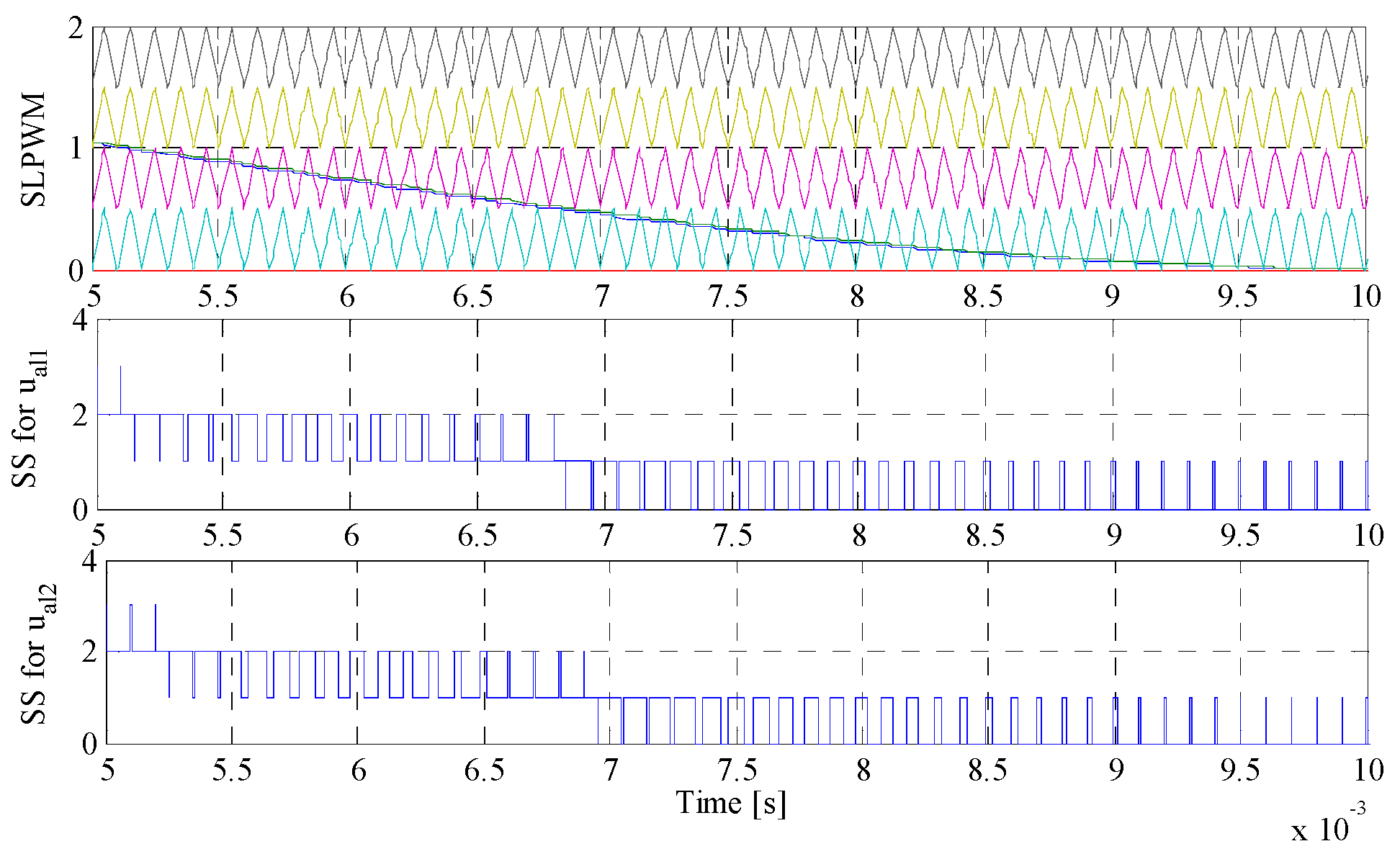
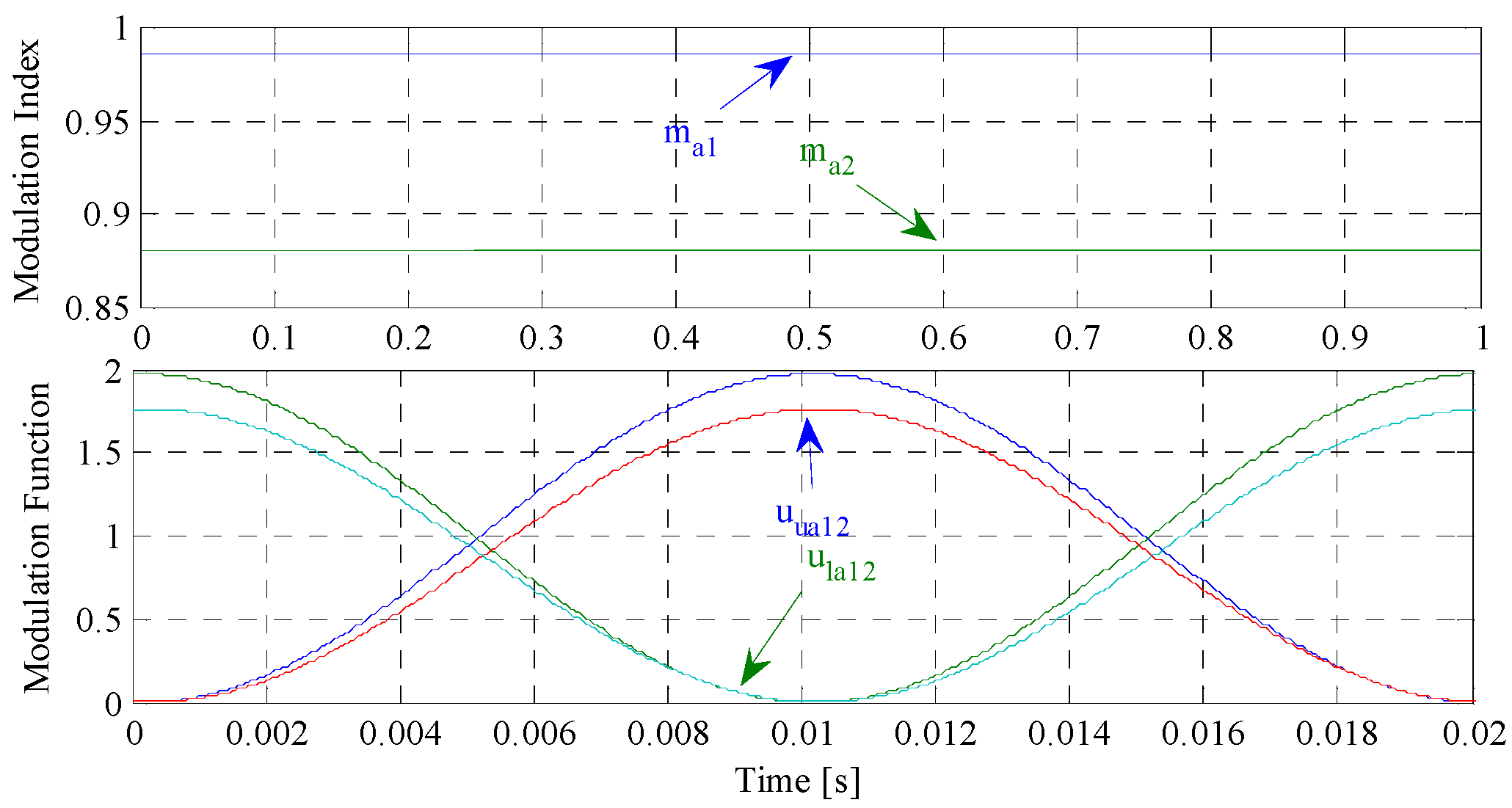
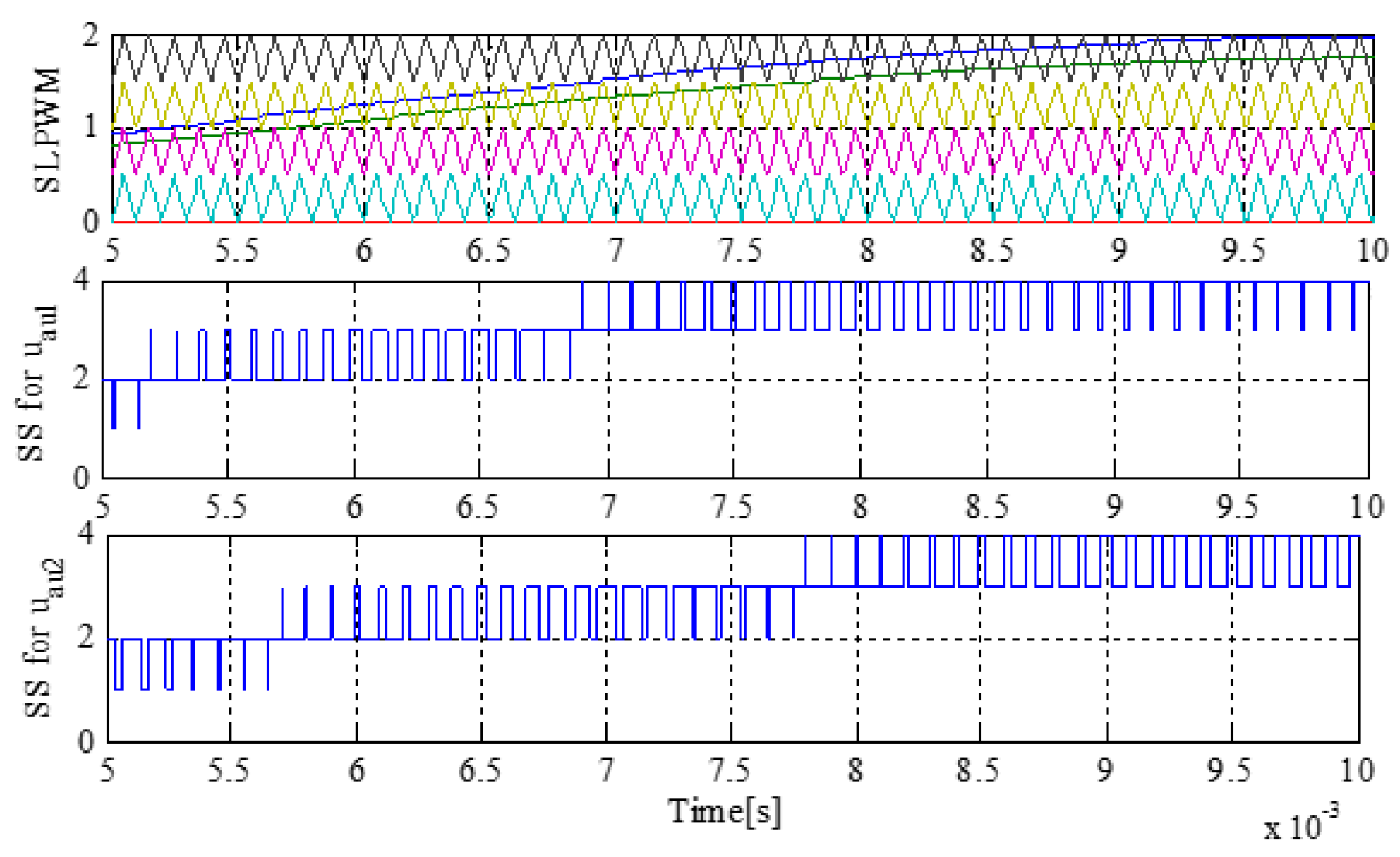
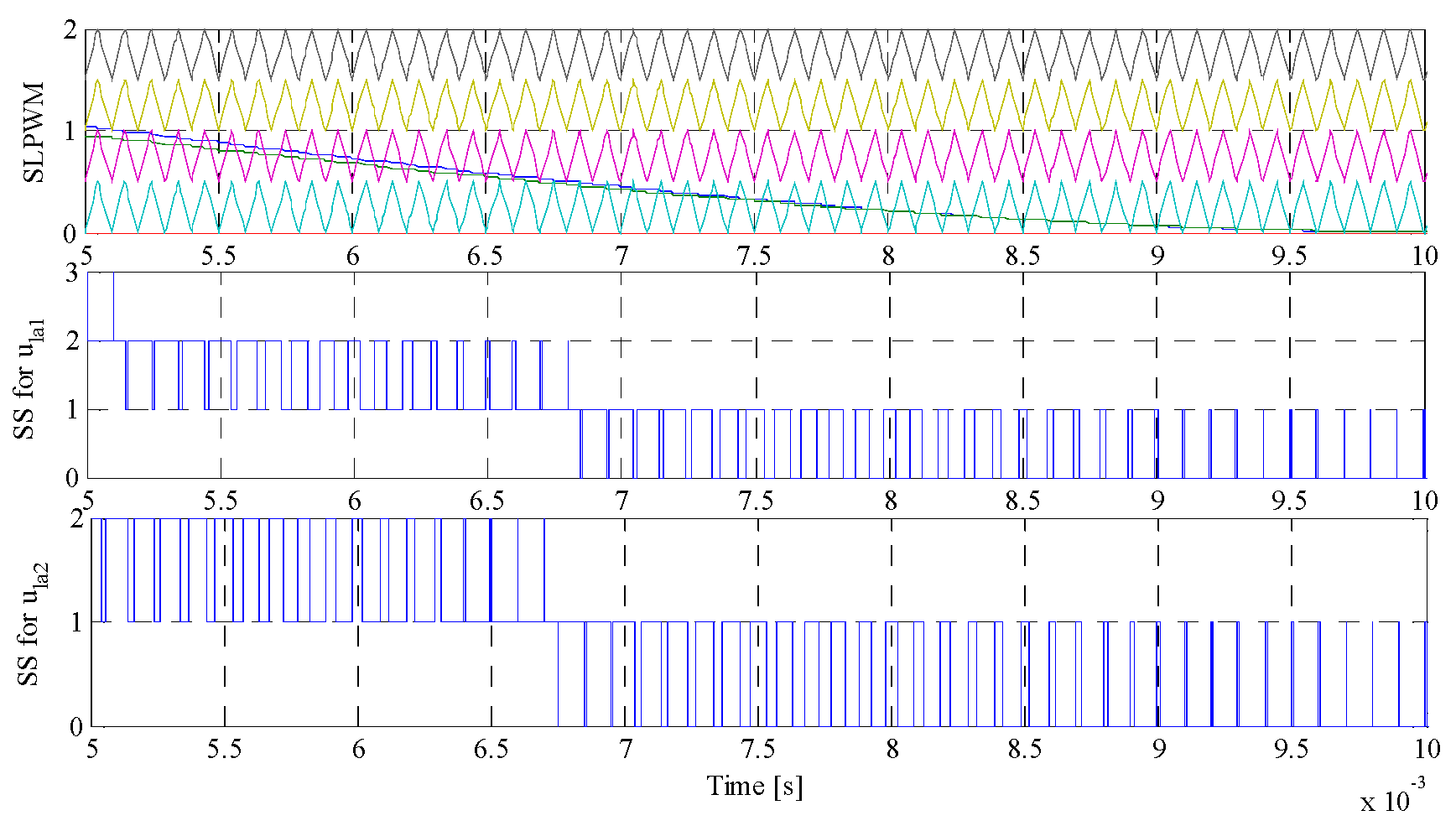
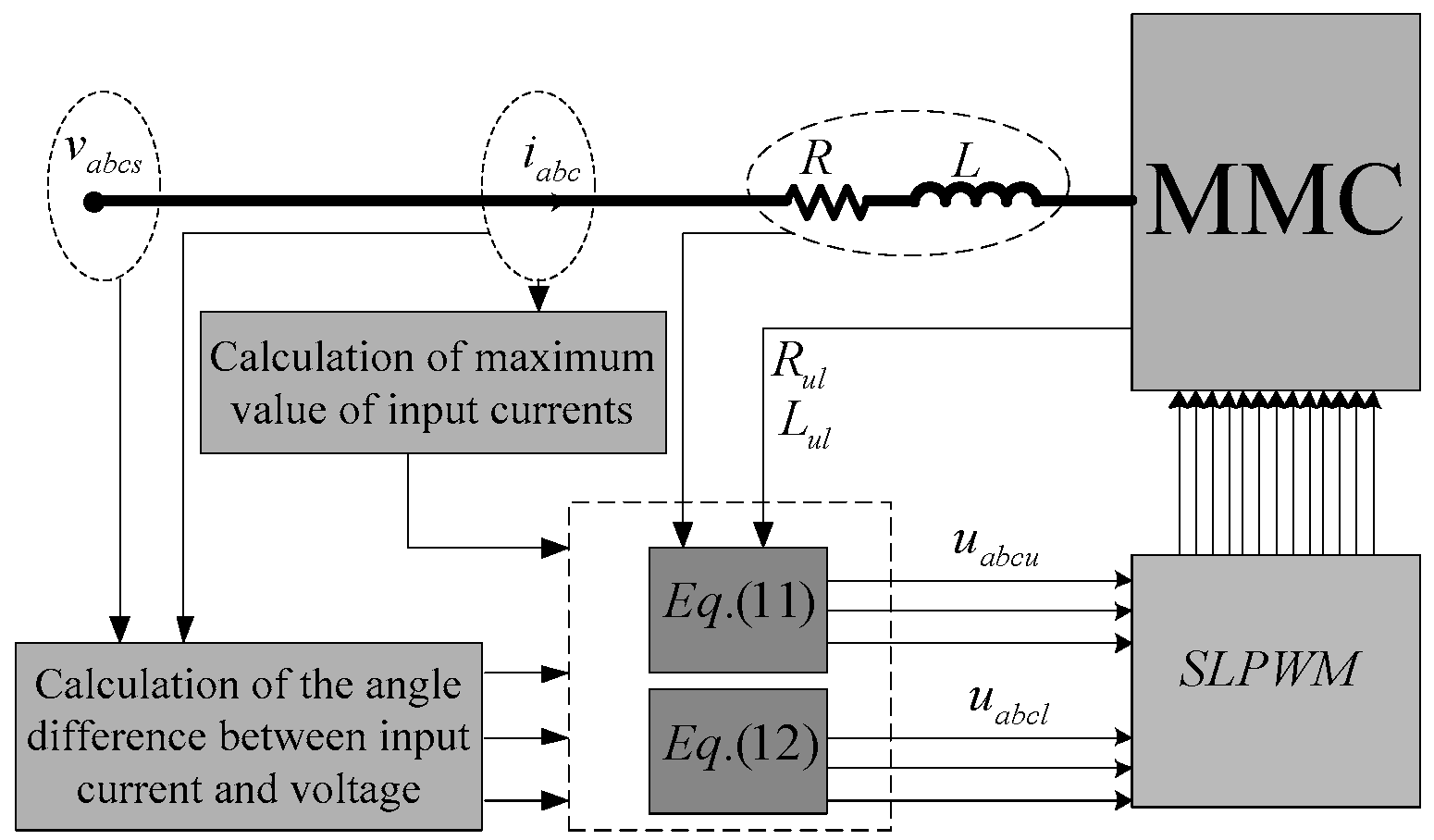
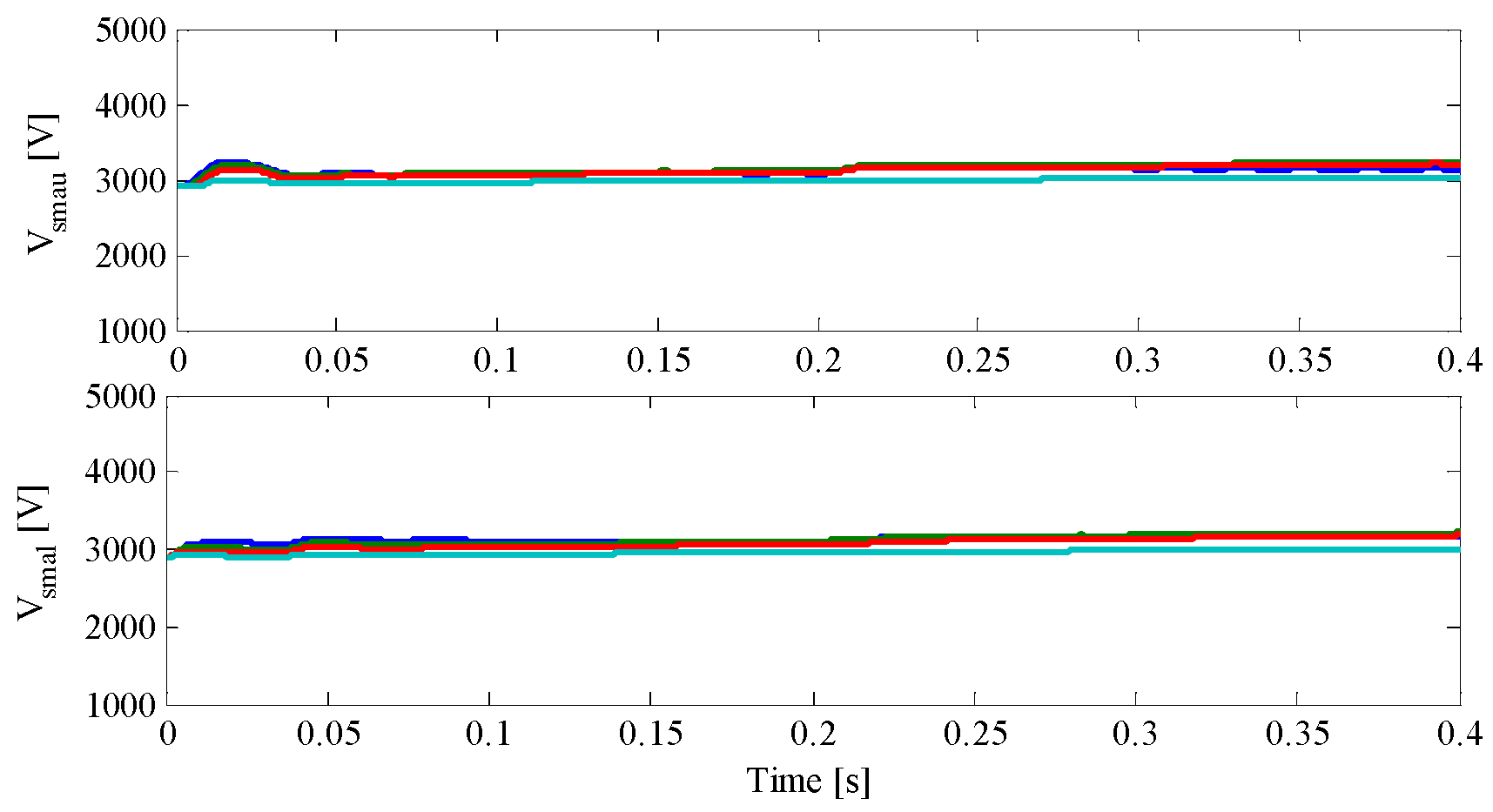
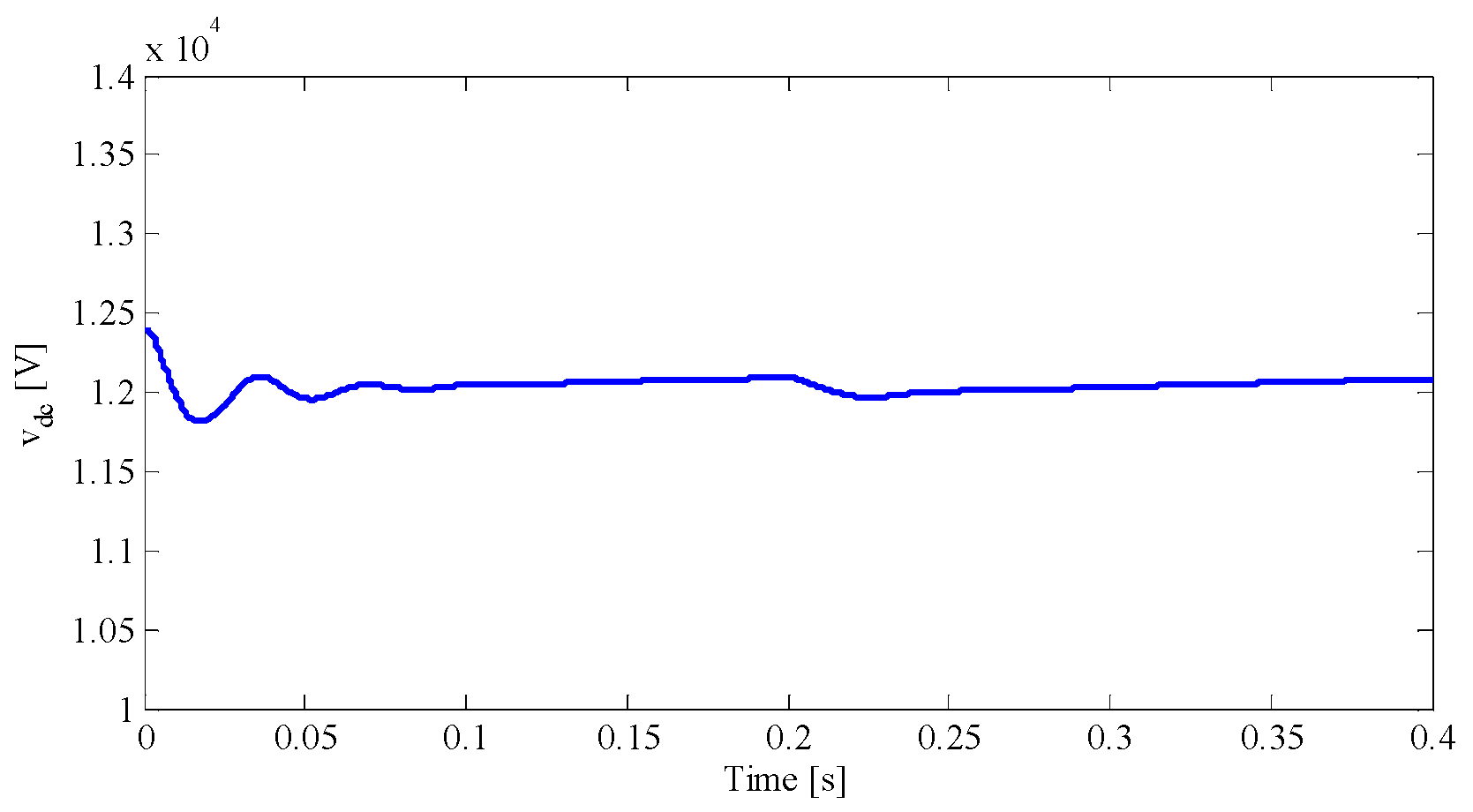
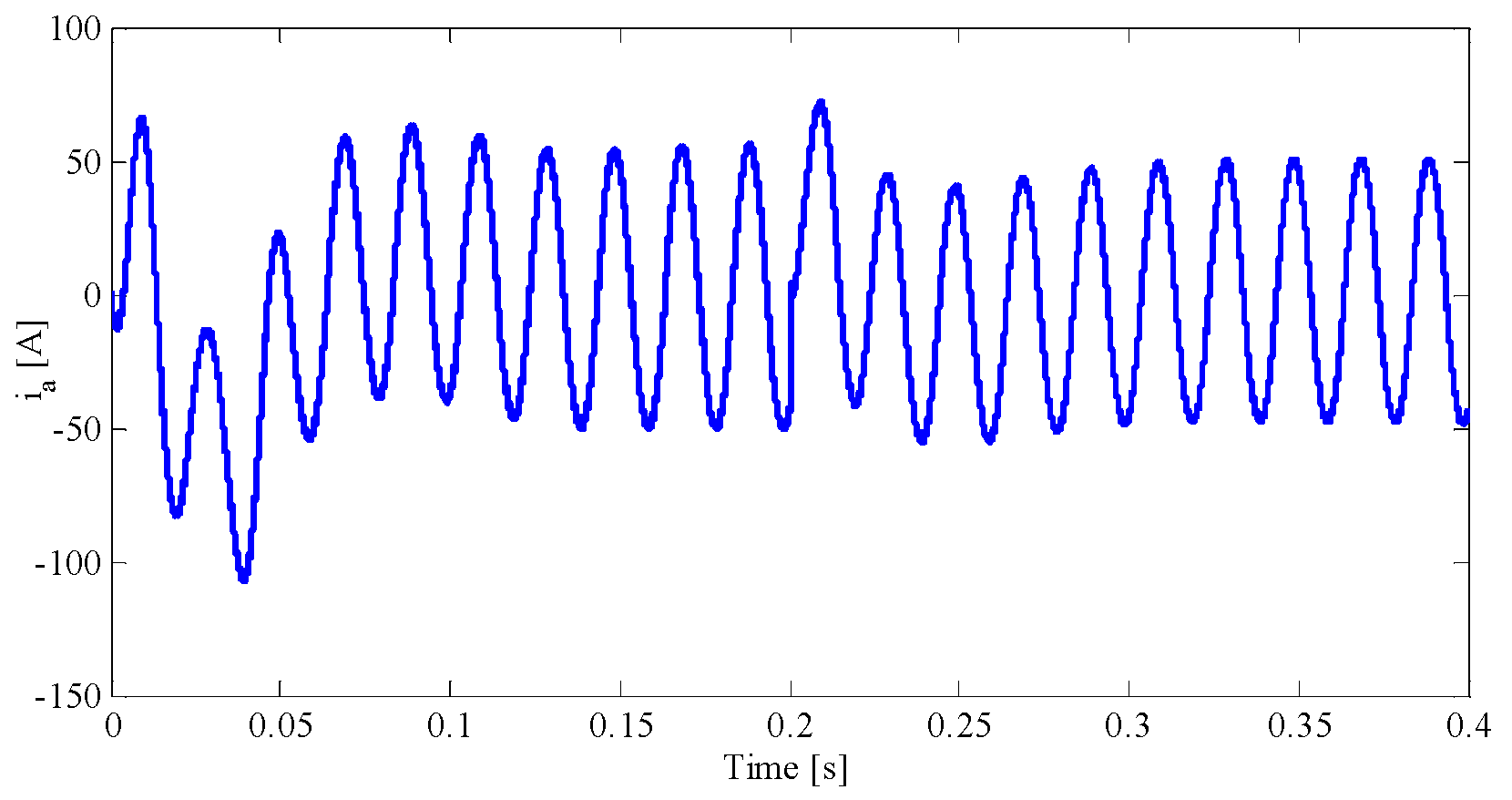
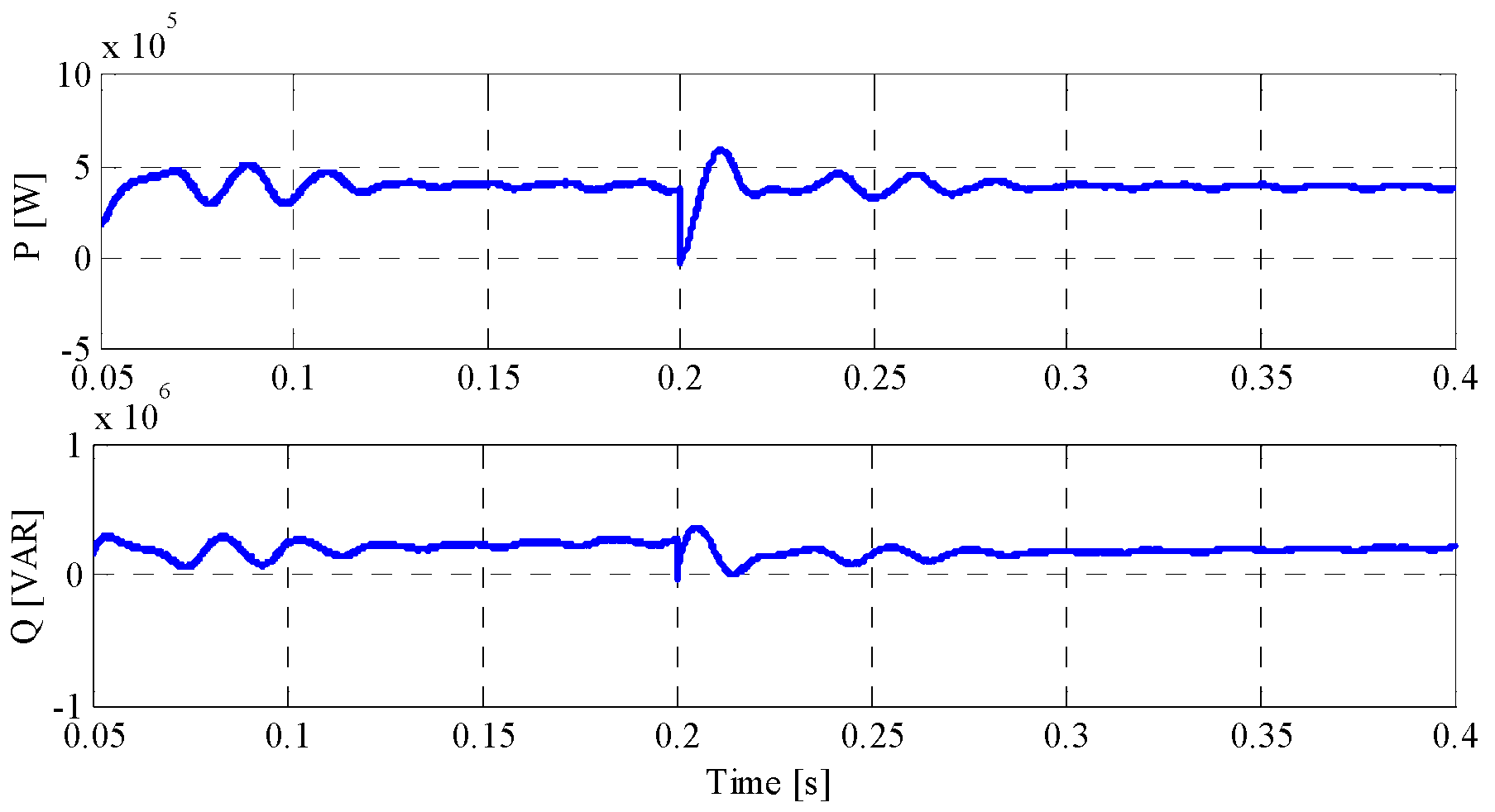
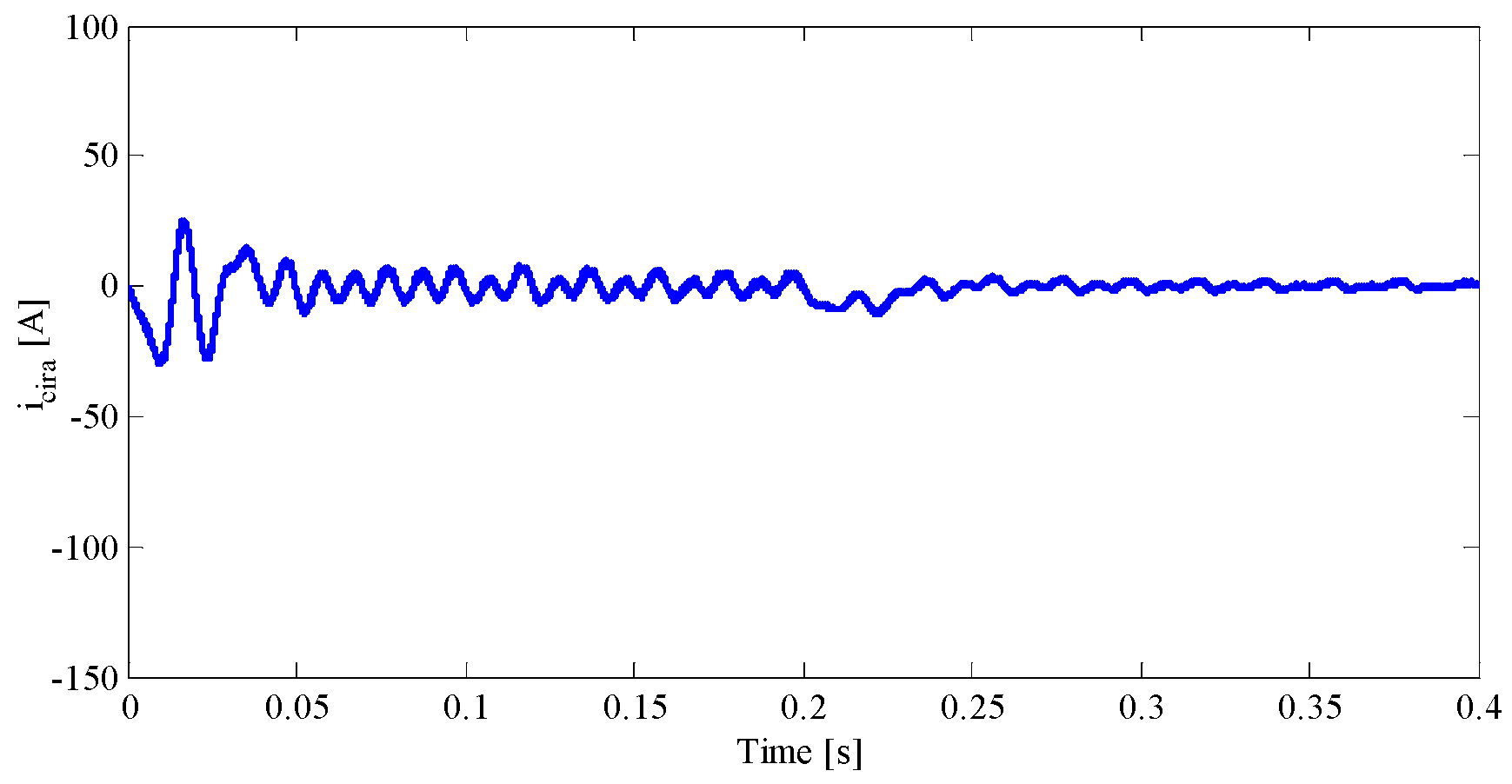
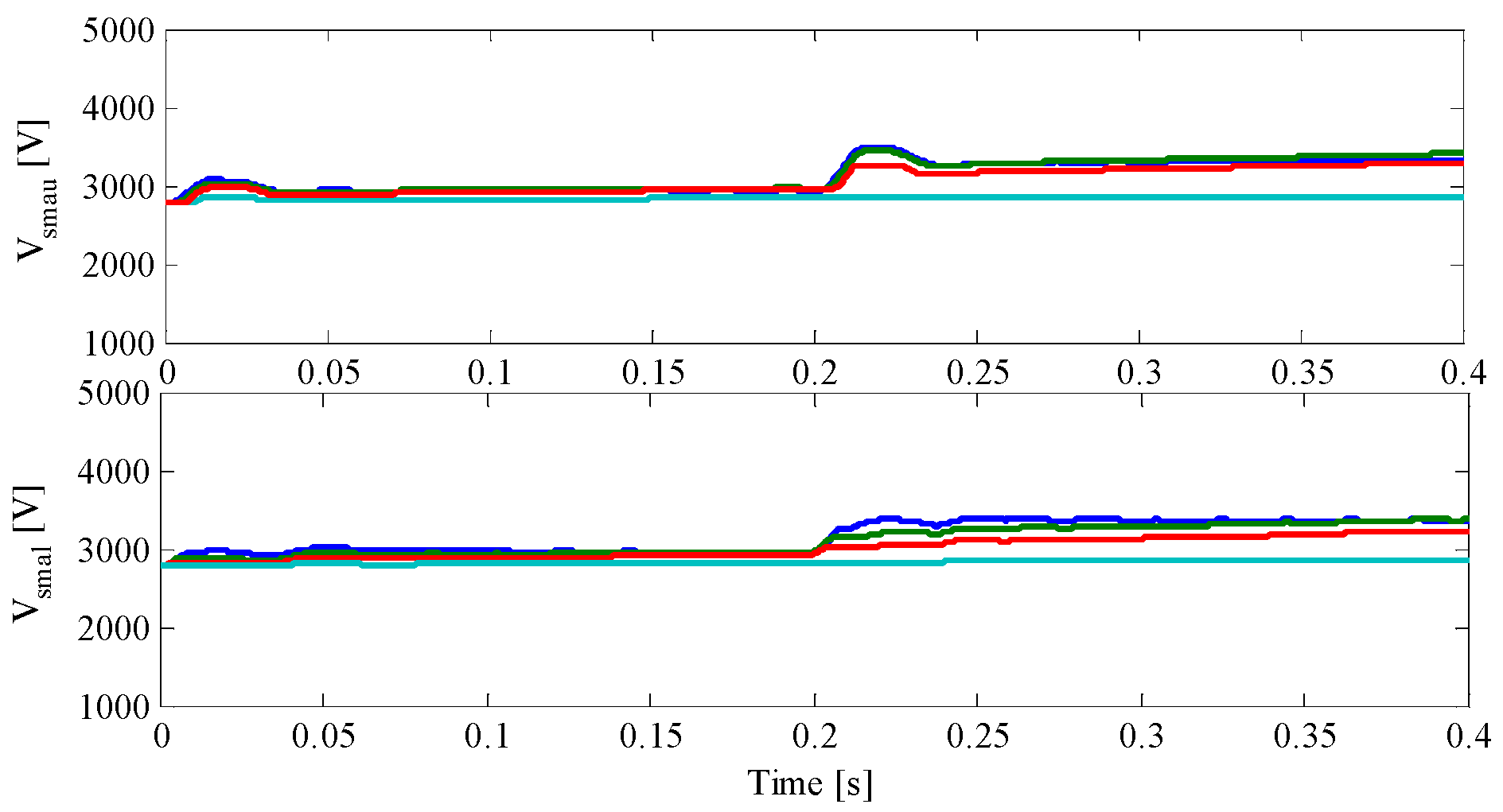
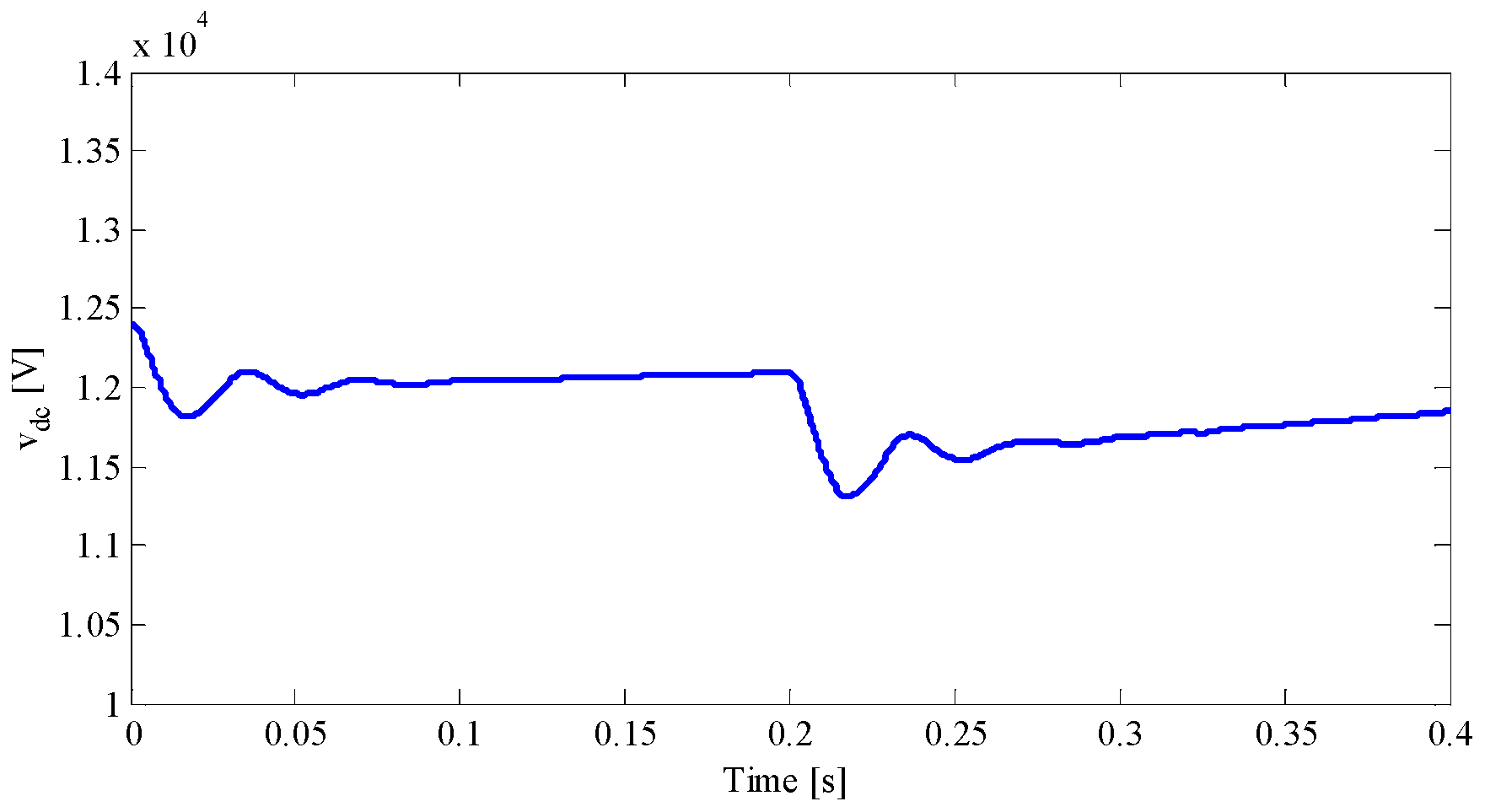
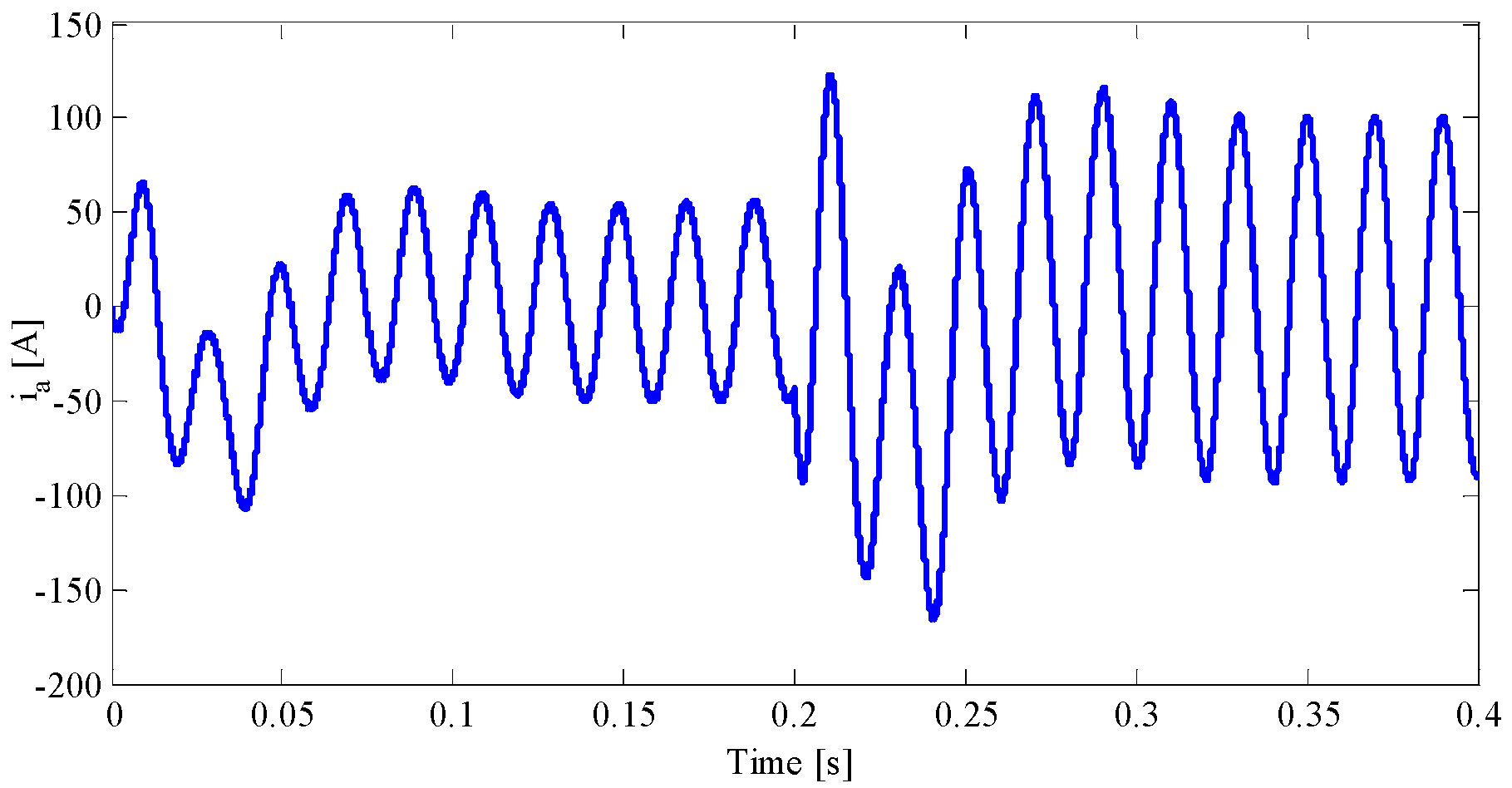
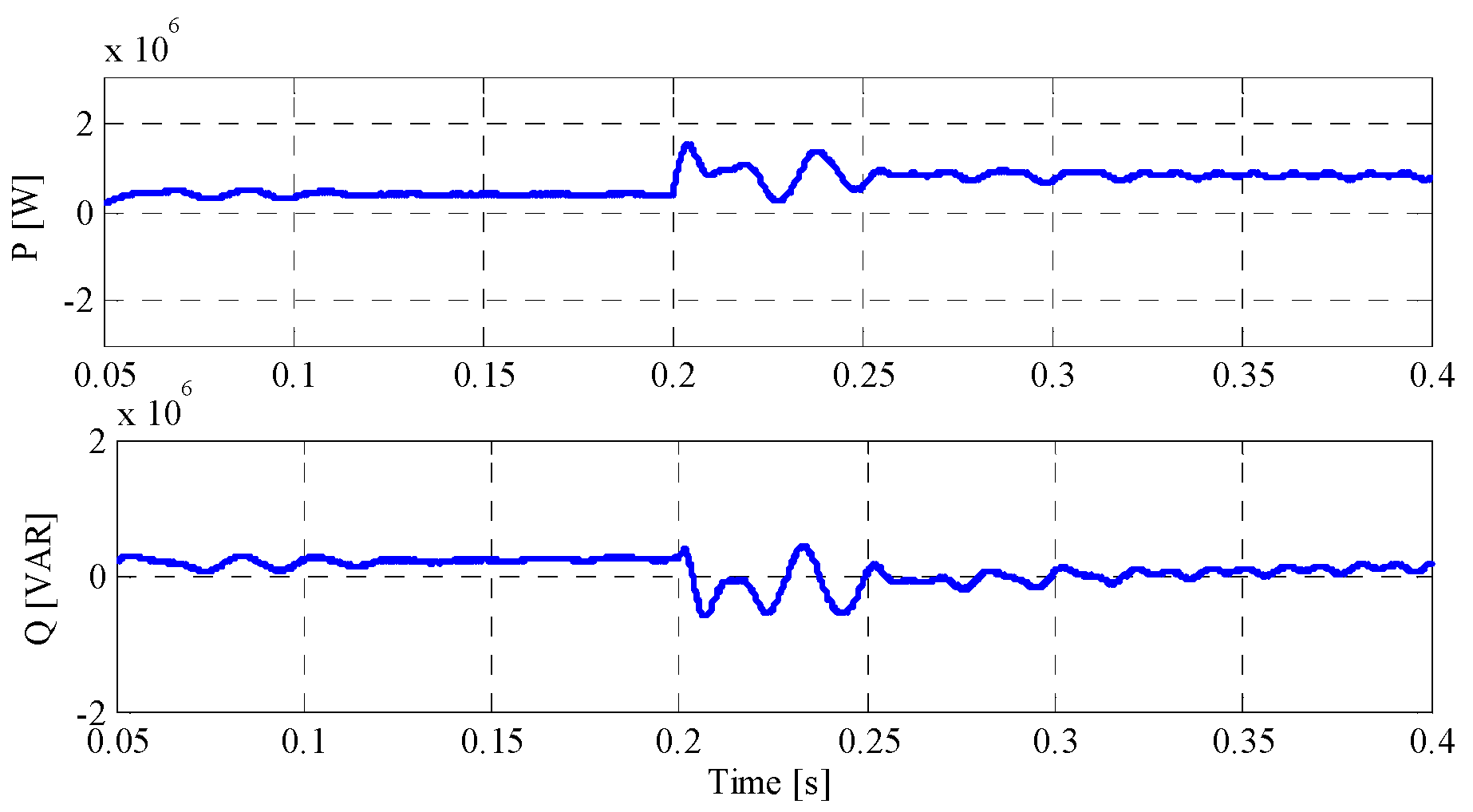
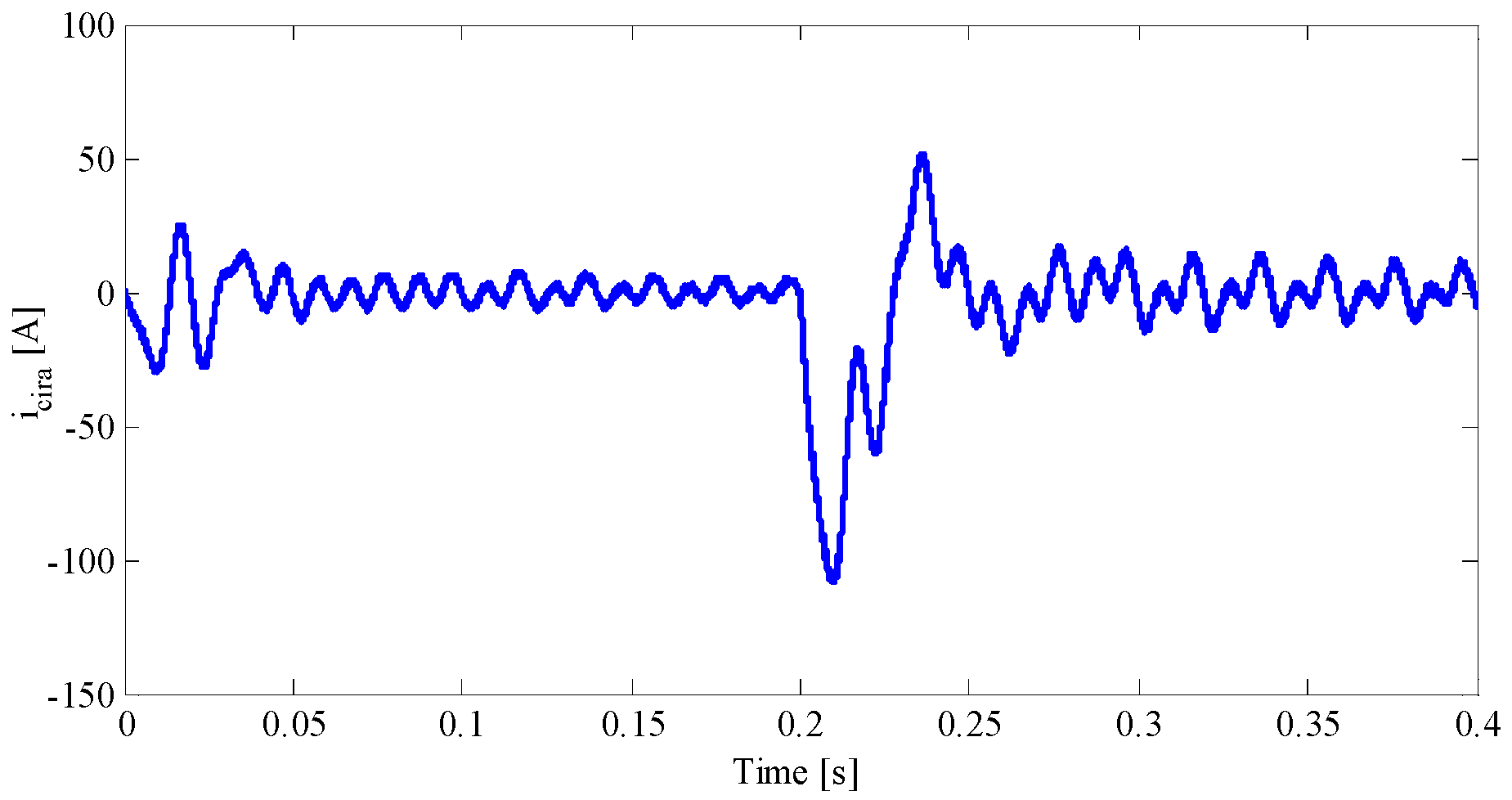
| Parameter | Value | Unit |
|---|---|---|
| Input resistance | 0.6 | Ohm |
| Input inductance | 15 | mH |
| Arm resistance | 0.5 | Ohm |
| Arm inductance | 5 | mH |
| AC voltage | 6 | kV |
| DC voltage | 12 | kV |
| N | 4 | - |
| Input frequency | 50 | Hz |
| Carrier frequency | 10 | kHz |
| SM capacitance | 5 | mF |
| SM voltage | 3 | kV |
| Parameter | Value | Unit |
|---|---|---|
| Input resistance | 1.2 | Ohm |
| Input inductance | 25 | mH |
| Arm resistance | 1.5 | Ohm |
| Arm inductance | 10 | mH |
| AC voltage | 6 | kV |
| 50 | A | |
| 0 | - |
© 2016 by the authors; licensee MDPI, Basel, Switzerland. This article is an open access article distributed under the terms and conditions of the Creative Commons Attribution (CC-BY) license (http://creativecommons.org/licenses/by/4.0/).
Share and Cite
Mehrasa, M.; Pouresmaeil, E.; Zabihi, S.; Trujillo Caballero, J.C.; Catalão, J.P.S. A Novel Modulation Function-Based Control of Modular Multilevel Converters for High Voltage Direct Current Transmission Systems. Energies 2016, 9, 867. https://doi.org/10.3390/en9110867
Mehrasa M, Pouresmaeil E, Zabihi S, Trujillo Caballero JC, Catalão JPS. A Novel Modulation Function-Based Control of Modular Multilevel Converters for High Voltage Direct Current Transmission Systems. Energies. 2016; 9(11):867. https://doi.org/10.3390/en9110867
Chicago/Turabian StyleMehrasa, Majid, Edris Pouresmaeil, Sasan Zabihi, Juan C. Trujillo Caballero, and João P. S. Catalão. 2016. "A Novel Modulation Function-Based Control of Modular Multilevel Converters for High Voltage Direct Current Transmission Systems" Energies 9, no. 11: 867. https://doi.org/10.3390/en9110867






